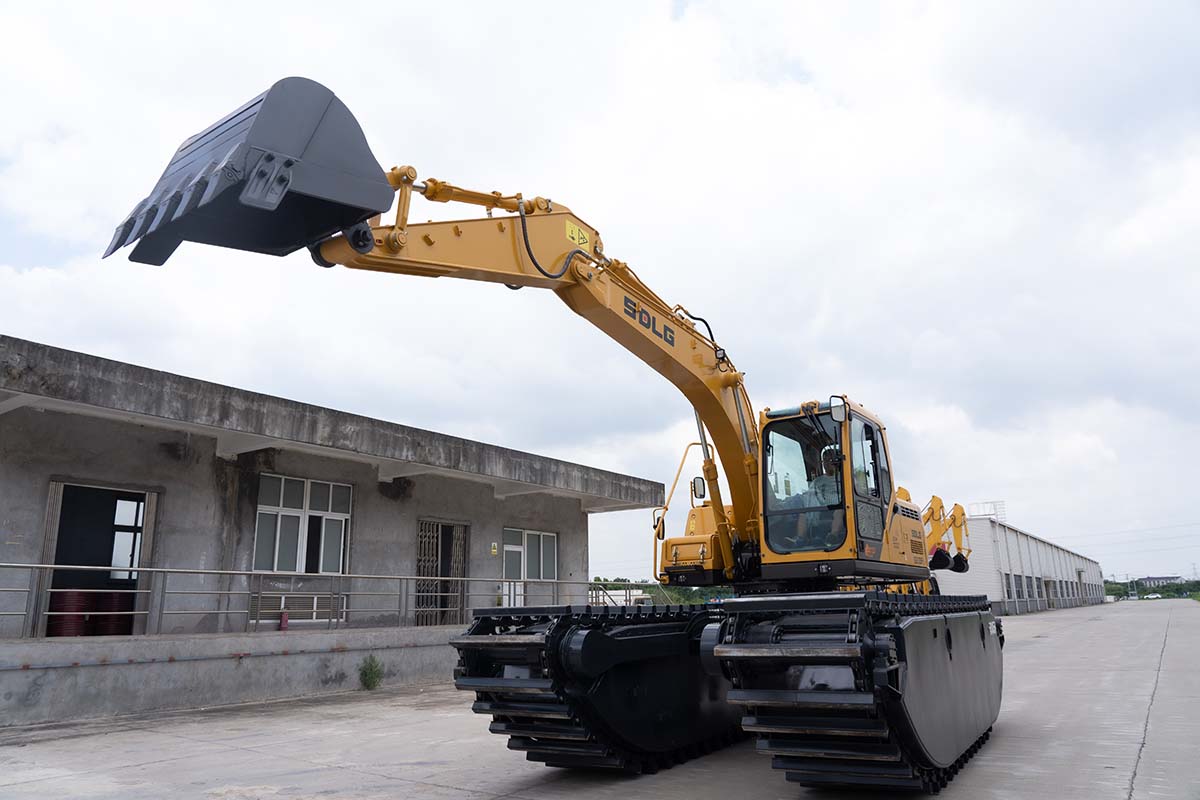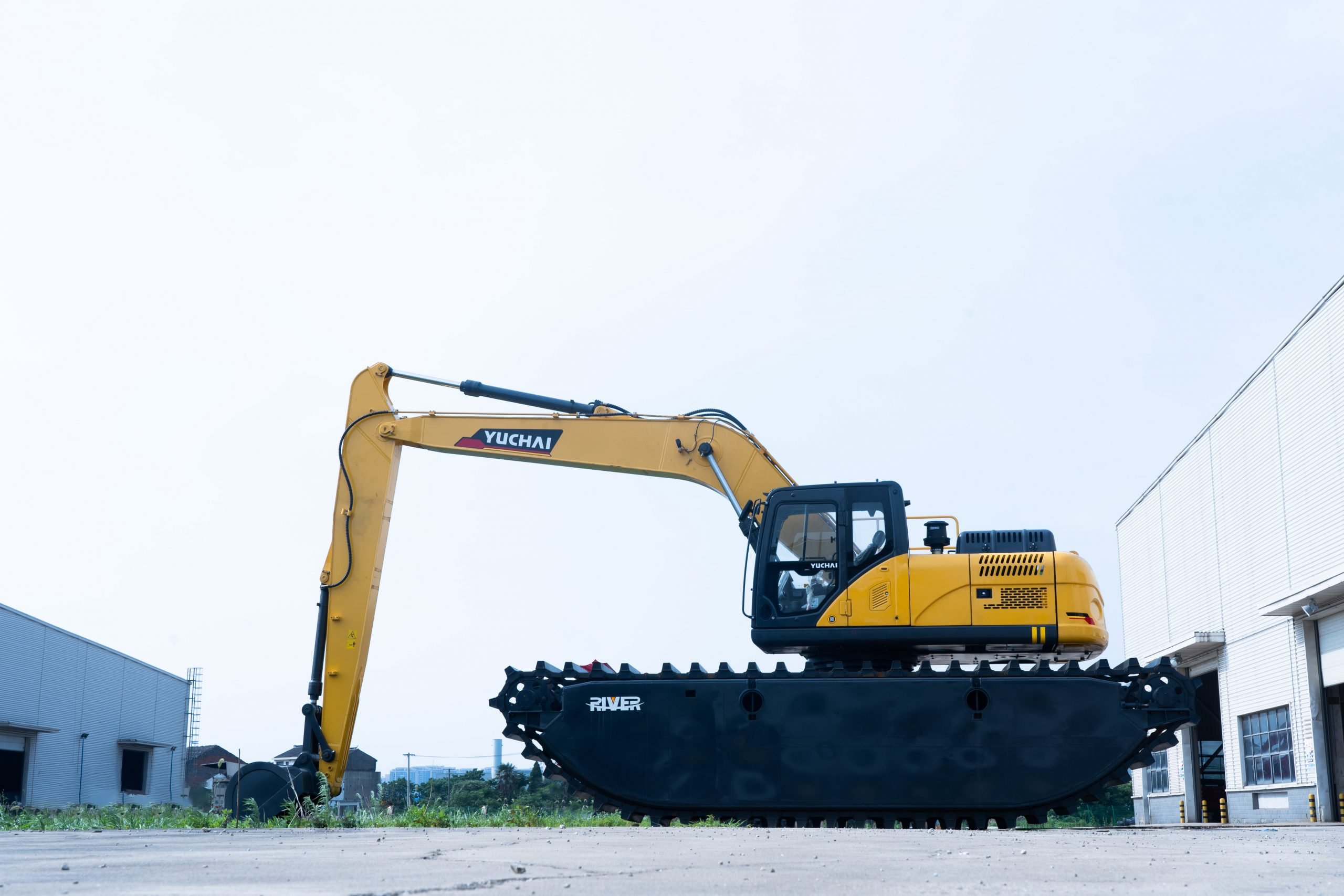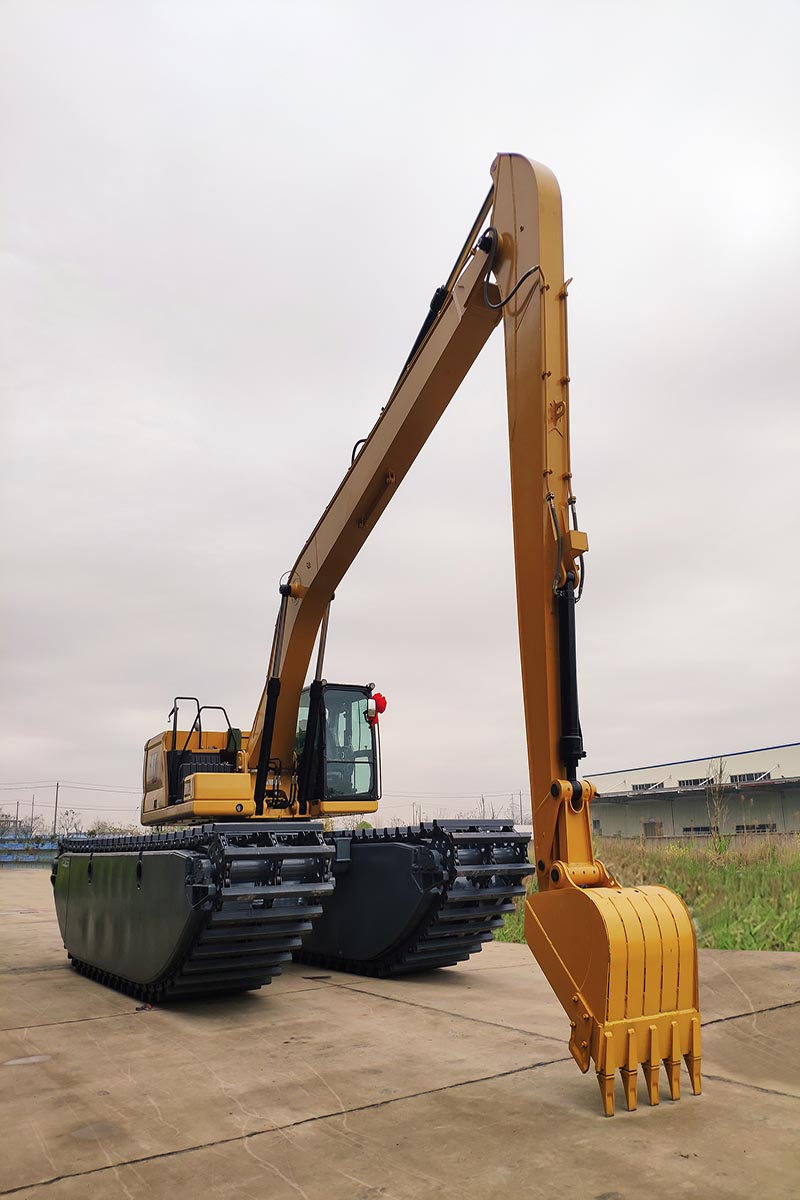Navigating waterways efficiently and safely is crucial for various industries, from commerce to recreation. However, maintaining optimal conditions in rivers, canals, and ports poses significant challenges due to sedimentation, debris accumulation, and natural erosion. In addressing these challenges, floating excavators have emerged as indispensable tools.
These specialized machines play a pivotal role in dredging operations, clearing obstacles, and ensuring navigational depths are maintained. This article explores how floating excavators revolutionize waterway maintenance, enhancing accessibility, safety, and sustainability for vessels of all types.

Challenges in Maintaining Waterway Navigation
Ensuring navigability in aquatic environments presents unique challenges, often compounded by the limitations of traditional excavators. These challenges include managing sediment accumulation, addressing navigational hazards, and conducting dredging operations within the constraints of budgets and environmental regulations. Traditional equipment may struggle to adapt to the diverse conditions present in waterway maintenance, highlighting the need for more specialized and capable machinery.
Sediment Accumulation and Shoaling
Sediment accumulation and shoaling pose significant threats to waterway navigation, requiring regular dredging projects to ensure safe and unobstructed passage for vessels. The dynamic nature of sedimentation processes demands ongoing monitoring and responsive maintenance strategies to prevent the formation of sandbars and shoals that can impede marine traffic.
Navigational Hazards and Obstructions
Waterborne debris, sunken vessels, and natural growth can create navigational hazards that obstruct waterways. Timely identification and removal of these obstacles are crucial for maintaining safe passage and preventing potential accidents or bottlenecks in marine transportation routes.
Environmental Impact and Conservation Concerns
Environmental conservation efforts must be balanced with the necessity of waterway maintenance. Activities such as dredging and vegetation removal have the potential to disrupt ecosystems, necessitating careful planning and execution to minimize ecological disturbances and protect aquatic life.
Budget Constraints and Funding Issues
Budget constraints and funding issues often hamper the ability of agencies to perform adequate waterway maintenance. Limited resources can lead to deferred maintenance, resulting in a cycle of degradation and more costly repairs or interventions in the long term.
Technological Limitations in Traditional Dredging
Traditional dredging methods are often constrained by technological limitations, which can restrict the efficiency and effectiveness of waterway maintenance efforts. These limitations can also impede the ability to perform tasks in sensitive or hard-to-reach areas, underscoring the need for more advanced and adaptable solutions.

Role of Excavators in Waterway Maintenance
Floating excavators have become instrumental in waterway maintenance within aquatic environments. Their design, featuring pontoons or amphibious tracks, allows them to undertake tasks such as dredging and vegetation removal with minimal impact on the surrounding ecosystems. These versatile machines are adept at maintaining navigational depths and ensuring the continuity of marine traffic through effective waterway management.
Dredging and Deepening Water Channels
Floating excavators exert hydraulic power to dredge and deepen water channels, enabling them to maintain navigable depths and facilitate vessel movement. This function is crucial for erosion control and the prevention of sediment-related navigation issues, ensuring the reliability of waterways for commercial and recreational use.
Clearing Debris and Obstructions
In marine construction, floating excavators, sometimes referred to as marsh buggies, excel in removing debris and obstructions from waterways. Their design allows them to traverse soft terrain without causing damage, making them ideal for cleanup operations in areas where traditional machinery would be ineffective or impractical.
Maintaining Depth for Vessel Passage
Consistent depth maintenance is essential for safe and efficient vessel passage. Floating excavators play a critical role in this endeavor, removing sediment buildup and ensuring that water channels meet the depth requirements for various types of marine vessels.
Improving Water Flow and Navigation Safety
Amphibious equipment is beneficial for enhancing water flow and navigation safety. By addressing obstructions and ensuring the proper channel depths, these machines help to prevent accidents and facilitate smoother travel through waterways, safeguarding both vessels and the sensitive habitats they traverse.

How Floating Excavators Improve Waterway Navigation
As a practical solution for tasks such as dredging, floating excavators enhance waterway navigation by combining specialized designs with advanced functionality. These excavators are equipped to distribute their weight evenly, maintaining buoyancy and stability. With hydraulic systems engineered for efficient operation, they easily transition between land and aquatic settings, making them ideal for a wide range of challenging terrains, including wetland areas and shallow water bodies.
Contoured Shape to Enhance Maneuverability
The contoured shape of floating excavators is specifically engineered to enhance maneuverability in diverse aquatic environments. This streamlined form allows the machines to navigate through tight spaces and around obstacles with ease, making them highly effective for waterway maintenance tasks.
Spud System for Additional Stabilization
A key feature of floating excavators is the spud system, which provides additional stabilization during operation. This system anchors the excavator in place, allowing for precise and controlled movements, which is essential when working in environments where stability is challenged by water currents or uneven terrain.
Buoyancy for Efficient Displacement of Water
Floating excavators, a type of amphibious equipment, are designed to exhibit optimal buoyancy, allowing them to displace water efficiently while they operate. This is particularly advantageous when working in sensitive habitats, where minimizing disturbance to the ecosystem is paramount. The innate buoyancy prevents the heavy machinery from exerting excessive pressure on the substrate, which could otherwise lead to habitat damage or increased turbidity that can harm aquatic life.
Balanced Weight Distribution to Navigate Smoothly
For floating excavators to navigate smoothly through waterways, they must have a balanced weight distribution. This ensures that the excavator remains stable during operation and can maneuver with precision, which is essential when performing delicate tasks such as dredging near established infrastructure or in areas with limited space. The strategic distribution of weight also reduces the risk of capsizing and allows for more consistent performance, contributing to the overall efficacy of waterway maintenance efforts.
Wrap-Up!
Floating excavators, with their advanced buoyancy and stability, offer a revolutionary approach to maintaining and improving waterway navigation. These specialized pieces of equipment are adept at addressing the sedimentation and obstructions that challenge conventional excavators. By leveraging their ability to access remote and marshy areas, these excavators contribute significantly to wetland restoration projects and the removal of invasive species, ensuring sensitive areas are preserved while enhancing navigability.
